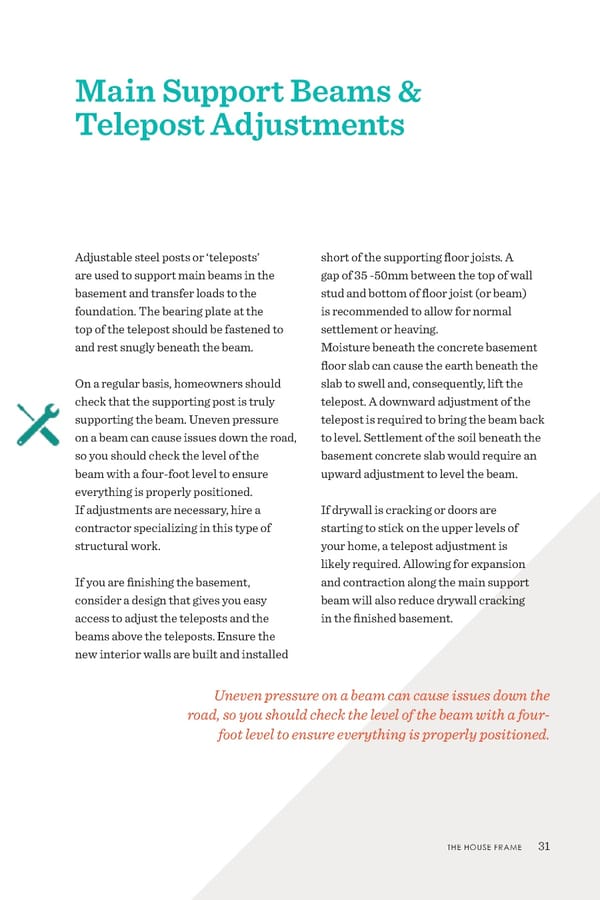Main Support Beams & Telepost Adjustments Adjustable steel posts or ‘teleposts’ are used to support main beams in the basement and transfer loads to the foundation. The bearing plate at the top of the telepost should be fastened to and rest snugly beneath the beam. On a regular basis, homeowners should check that the supporting post is truly supporting the beam. Uneven pressure on a beam can cause issues down the road, so you should check the level of the beam with a four-foot level to ensure everything is properly positioned. If adjustments are necessary, hire a contractor specializing in this type of structural work. If you are finishing the basement, consider a design that gives you easy access to adjust the teleposts and the beams above the teleposts. Ensure the new interior walls are built and installed short of the supporting floor joists. A gap of 35 -50mm between the top of wall stud and bottom of floor joist (or beam) is recommended to allow for normal settlement or heaving. Moisture beneath the concrete basement floor slab can cause the earth beneath the slab to swell and, consequently, lift the telepost. A downward adjustment of the telepost is required to bring the beam back to level. Settlement of the soil beneath the basement concrete slab would require an upward adjustment to level the beam. If drywall is cracking or doors are starting to stick on the upper levels of your home, a telepost adjustment is likely required. Allowing for expansion and contraction along the main support beam will also reduce drywall cracking in the finished basement. Uneven pressure on a beam can cause issues down the road, so you should check the level of the beam with a four- foot level to ensure everything is properly positioned. THE HOUSE FRAME 31
 ANHWP Care & Maintenance Guide 2022 Page 32 Page 34
ANHWP Care & Maintenance Guide 2022 Page 32 Page 34